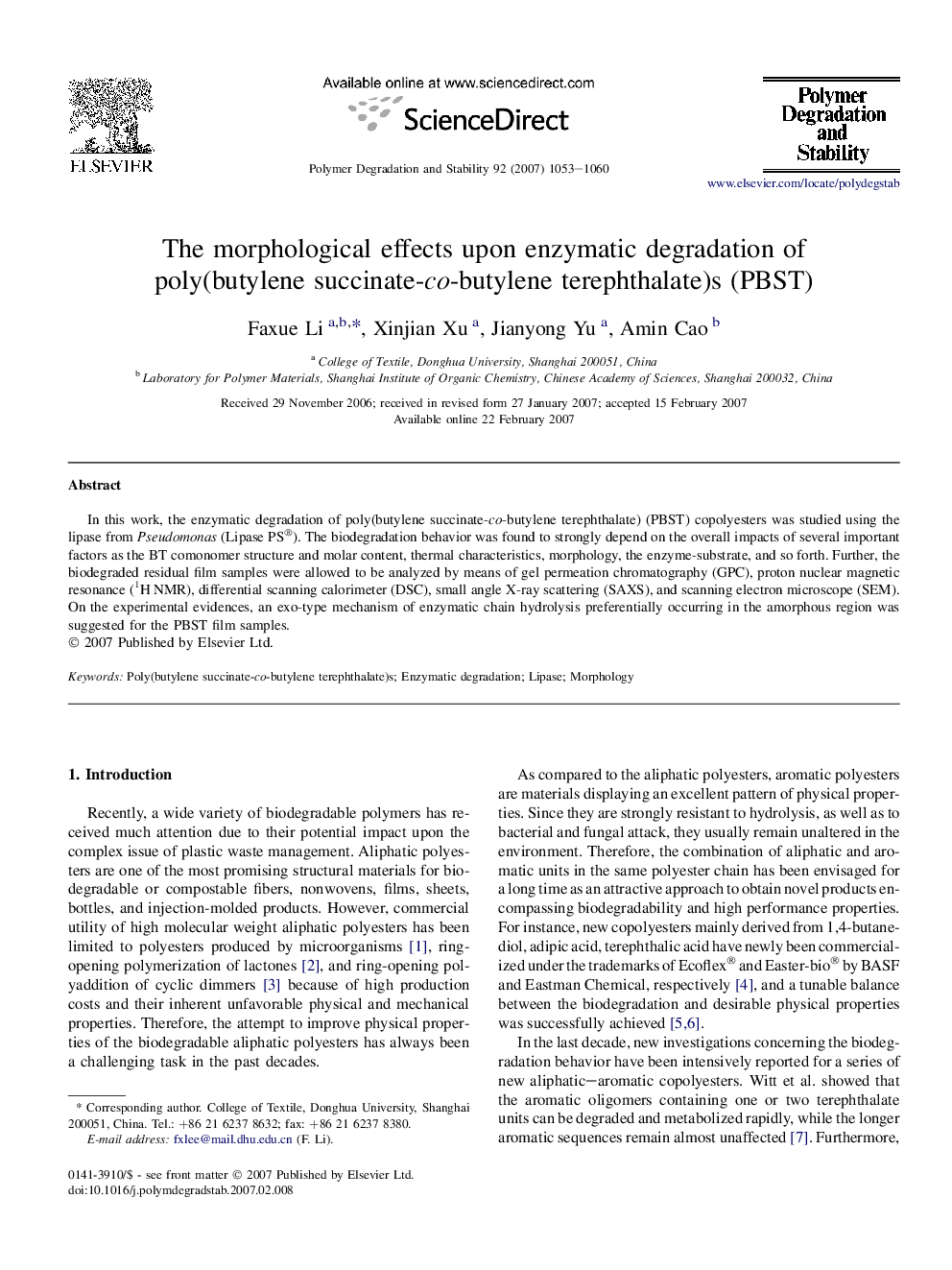| Article ID | Journal | Published Year | Pages | File Type |
|---|---|---|---|---|
| 5205097 | Polymer Degradation and Stability | 2007 | 8 Pages |
Abstract
In this work, the enzymatic degradation of poly(butylene succinate-co-butylene terephthalate) (PBST) copolyesters was studied using the lipase from Pseudomonas (Lipase PS®). The biodegradation behavior was found to strongly depend on the overall impacts of several important factors as the BT comonomer structure and molar content, thermal characteristics, morphology, the enzyme-substrate, and so forth. Further, the biodegraded residual film samples were allowed to be analyzed by means of gel permeation chromatography (GPC), proton nuclear magnetic resonance (1H NMR), differential scanning calorimeter (DSC), small angle X-ray scattering (SAXS), and scanning electron microscope (SEM). On the experimental evidences, an exo-type mechanism of enzymatic chain hydrolysis preferentially occurring in the amorphous region was suggested for the PBST film samples.
Related Topics
Physical Sciences and Engineering
Chemistry
Organic Chemistry
Authors
Faxue Li, Xinjian Xu, Jianyong Yu, Amin Cao,
